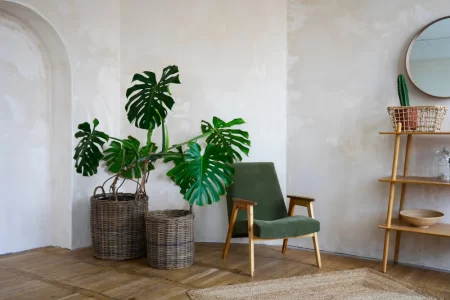 When it comes to designing your interior space, finding the right balance between aesthetics and functionality is key to creating a harmonious and comfortable living environment.
When it comes to designing your interior space, finding the right balance between aesthetics and functionality is key to creating a harmonious and comfortable living environment.
Striking this balance can be a challenging task, but with some thoughtful considerations, you can transform your space into a visual masterpiece that also serves your practical needs.
1. Define Your Design Goals
Start by clearly defining your design goals. Are you aiming for a modern, minimalistic look or a more traditional and cozy atmosphere?
Understanding your preferences will help you make choices that align with your vision.
2. Prioritize Layout and Traffic Flow
A visually stunning space loses its appeal if it’s difficult to navigate. Prioritize a functional layout that promotes smooth traffic flow.
Ensure that furniture placement doesn’t obstruct pathways and that there’s enough room for movement.
3. Select Multifunctional Furniture
Multifunctional furniture pieces are the epitome of blending aesthetics with practicality. Look for items that serve dual purposes, such as a sofa bed for guests or a coffee table with built-in storage.
These pieces not only save space but also add a touch of innovation to your interior.
4. Choose Colors Wisely
Colors play a crucial role in both aesthetics and mood. Opt for a color palette that resonates with your design style while also considering the psychological impact of different shades.
Soft, neutral colors can create a soothing atmosphere, while bold hues can add energy to a room.
5. Lighting Matters
Proper lighting can enhance the beauty of your interior and make it more functional. Incorporate a mix of ambient, task, and accent lighting to cater to different needs.
Pendant lights and floor lamps can serve as artistic statements while illuminating the space effectively.
6. Personalize with Decor
Decorative elements allow you to infuse your personality into the design. Choose decor pieces that resonate with you, whether it’s artwork, sculptures, or textiles.
Just remember that less is often more – overcrowding can detract from the overall aesthetic.
7. Conceal Clutter Creatively
A clutter-free space is visually appealing and promotes a sense of calm. Integrate clever storage solutions like floating shelves, hidden cabinets, and baskets to keep essentials organized and out of sight.
8. Embrace Nature
Bringing natural elements indoors not only adds aesthetic value but also contributes to a healthier environment.
Incorporate indoor plants, natural textures, and materials like wood to create a balanced, organic feel.
9. Regularly Review and Revise
As your needs and preferences evolve, so should your interior. Regularly assess the functionality of your space and make adjustments as necessary. This could involve rearranging furniture, updating decor, or even repainting walls.
Picture Credit: Freepik



